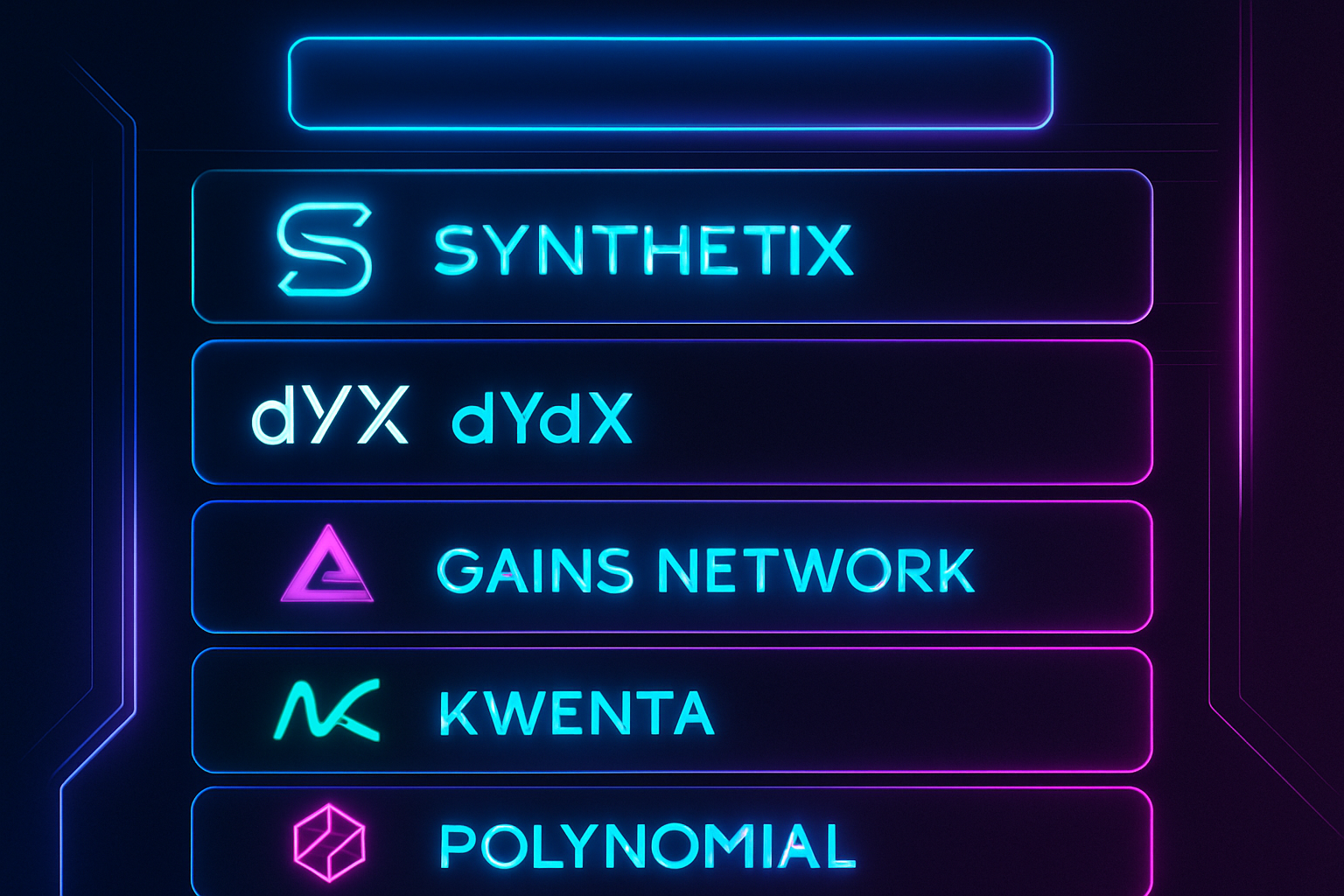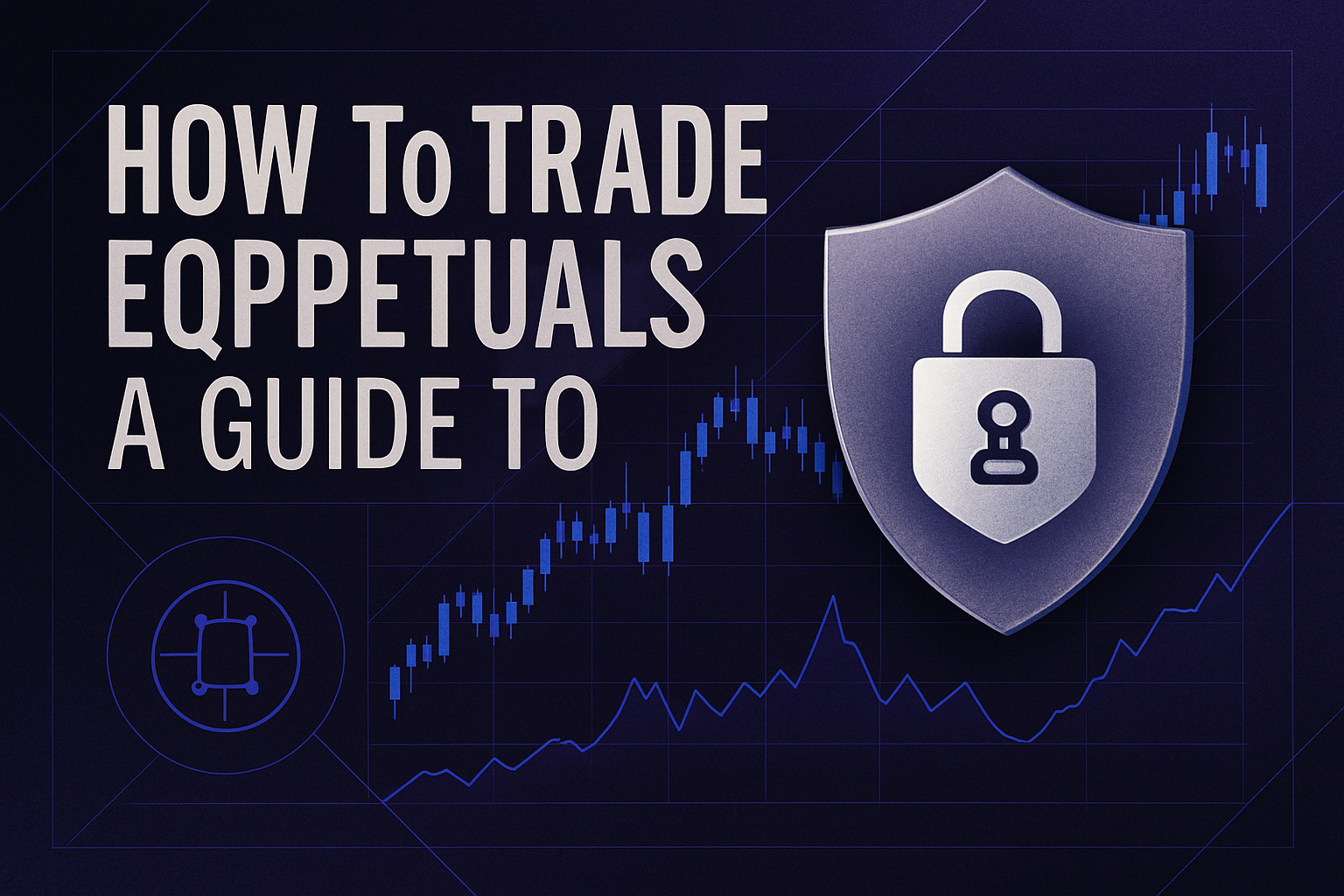
Perpetual decentralized exchanges (perp DEXs) have rapidly evolved to offer not just crypto futures but also synthetic exposure to traditional equities. In 2024, an increasing number of traders are seeking platforms that allow them to trade perpetual contracts on synthetic stocks, enabling 24/7 access, high leverage, and the transparency of DeFi. The competition is fierce, but a handful of DEXs stand out for their innovation, liquidity, and user experience. Here’s a data-driven look at the best perpetual DEXs for synthetic stock trading this year.

Why Trade Synthetic Stocks via Perpetual DEXs?
Synthetic stocks are blockchain-based representations of real-world equities. They enable global traders to speculate on price movements without needing a brokerage account or direct exposure to the underlying asset. The rise of perp DEXs specializing in these instruments has democratized access and reduced entry barriers. Key advantages include:
- 24/7 Markets: No downtime, trade whenever volatility strikes.
- Leverage: Amplify returns with flexible leverage options (up to 50x or more on some platforms).
- Decentralization: Retain custody of your assets and benefit from transparent smart contract execution.
- Diverse Asset Selection: Access both blue-chip and niche equities as synthetic perps.
The Top 5 Perpetual DEXs for Synthetic Stocks in 2024
Top 5 Perpetual DEXs for Synthetic Stock Trading
-

Synthetix (Perps V3): The latest iteration of the Synthetix protocol, Perps V3, enables decentralized perpetual trading on a wide array of synthetic assets, including stocks. It features deep liquidity, efficient on-chain order execution, and robust risk management, making it a foundational layer for synthetic stock trading in DeFi.
-

dYdX: A leading decentralized exchange that migrated to its own Cosmos-based blockchain in 2024, dYdX offers up to 20x leverage on perpetual contracts. Its advanced trading features, decentralized governance, and support for synthetic stocks make it a top choice for traders seeking equity exposure.
-

Gains Network (gTrade): Gains Network operates gTrade, a DEX offering synthetic asset trading with leverage up to 150x on crypto and 1000x on forex, now including synthetic stocks. Its decentralized approach and high leverage options attract traders seeking flexibility and deep markets.
-

Kwenta: Built on Synthetix, Kwenta specializes in trading synthetic assets such as stocks, commodities, and forex. It offers zero-slippage trading and up to 50x leverage on perpetuals, with deep liquidity and a user-friendly interface.
-

Polynomial: Polynomial is a DeFi platform focused on perpetual options and synthetic stock trading. It leverages Synthetix liquidity and innovative risk management tools, providing traders with seamless access to synthetic equity markets in a decentralized environment.
The following platforms have emerged as leaders in synthetic stock trading based on liquidity, leverage, security, and breadth of assets:
- Synthetix (Perps V3): Synthetix continues to set the standard for decentralized derivatives infrastructure. With Perps V3, it offers deep liquidity and tight spreads across a growing list of synthetic stocks. Traders benefit from efficient order matching and robust risk management mechanisms powered by Synthetix’s collateralized debt pool model. The recent upgrade has improved capital efficiency while maintaining security, a crucial factor for high-volume traders.
- dYdX: dYdX’s migration to its own Cosmos-based chain in 2024 delivered major improvements in speed and scalability. Known for its advanced order book system and up to 20x leverage, dYdX has expanded its asset roster to include popular US equities as synthetics. Its decentralized governance ensures ongoing feature development tailored to active traders’ needs. For those prioritizing performance and reliability, dYdX remains a top contender (source).
- Gains Network (gTrade): Gains Network stands out for offering extremely high leverage, up to 150x on crypto pairs and up to 1000x on forex, with competitive rates also available for synthetic stocks. Its unique oracle-based pricing model allows efficient capital deployment while minimizing slippage even during volatile sessions. gTrade is ideal for experienced traders seeking both flexibility and aggressive positioning.
- Kwenta: Built atop Synthetix’s liquidity engine, Kwenta specializes in zero-slippage trading across a broad spectrum of synthetics, including stocks from global indices, commodities, and forex pairs. Kwenta’s intuitive interface makes it accessible even for newer DeFi users while still providing the tools advanced traders demand: cross-margining, customizable order types, and seamless integration with hardware wallets (source).
- Polynomial: Polynomial brings structured products innovation into perp trading with automated strategies built atop Synthetix’s pools. It enables users to gain delta-neutral or leveraged exposure to synthetic stocks through simple vault products, ideal for passive investors or those looking to automate their approach without constant position management.
Navigating Platform Features: What Sets Each Apart?
The differentiation among these leading perp DEXs goes beyond just asset coverage or headline leverage numbers. Here are some nuanced factors that set them apart:
- Synthetix (Perps V3): Focuses on protocol-level security with robust oracle integrations.
- dYdX: Offers an institutional-grade order book experience with deep liquidity pools.
- Gains Network (gTrade): Delivers ultra-high leverage options alongside risk controls like dynamic liquidation thresholds.
- Kwenta: Prioritizes user experience with one-click trading flows and portfolio analytics dashboards.
- Polynomial: Automates complex strategies so users can focus on risk-adjusted returns rather than manual execution.
This diversity allows traders, from daytraders seeking fast execution to passive investors exploring automated strategies, to find a platform that matches their risk appetite and workflow preferences.
Security remains a core concern when trading synthetic stocks on perpetual DEXs. Synthetix (Perps V3) and dYdX both employ time-tested smart contracts and rigorous auditing processes, giving users confidence in the integrity of their trades and funds. Meanwhile, platforms like Polynomial leverage Synthetix’s infrastructure to further insulate users from protocol-level risks, while offering innovative automated vaults that abstract away the complexity of delta hedging and risk management.
Liquidity is another critical factor. dYdX’s order book model attracts professional market makers, resulting in tighter spreads and deeper books for larger synthetic stock positions. Synthetix (Perps V3), with its pooled collateral system, ensures that even less-traded synthetic equities can be accessed without major price impact. Kwenta, by tapping directly into Synthetix liquidity, enables zero-slippage execution, an edge for algorithmic traders or those executing large orders.
Comparing Leverage, Fees, and User Experience
The best perpetual DEXs for synthetic stocks are not just about asset selection, they’re about giving traders tools to manage risk and maximize returns:
- Leverage: Gains Network (gTrade) leads with up to 150x leverage on crypto pairs and significant leverage on stocks; dYdX caps at 20x but compensates with deep liquidity; Synthetix/Kwenta/Polynomial generally offer 10-50x depending on the asset.
- Fees: Fee structures vary, Synthetix-based platforms charge dynamic fees based on volatility, while dYdX uses a maker-taker model. Polynomial’s vaults often bundle fees into strategy performance metrics.
- User Experience: Kwenta’s slick UI stands out for its clarity; dYdX appeals to active traders familiar with CEX-style order books; Polynomial excels at passive strategies; Synthetix is ideal for those who want direct protocol interaction.
Perpetual DEXs: Leverage, Fees & Synthetic Stock Coverage
-

Synthetix (Perps V3): Leverage: Up to 50x Fee Model: Dynamic fees based on market volatility and liquidity, typically ranging from 0.01% to 0.10% per trade Synthetic Stock Coverage: Broad range of blue-chip US equities (e.g., sAAPL, sTSLA, sGOOGL), with new assets added via governance.
-

dYdX: Leverage: Up to 20x Fee Model: Maker-taker model with fees as low as 0.02% for makers and 0.05% for takers, plus dynamic funding rates Synthetic Stock Coverage: Expanding list of synthetic equities, including major US tech stocks and global indices.
-

Gains Network (gTrade): Leverage: Up to 150x on crypto, up to 1000x on forex, and up to 50x on synthetic stocks Fee Model: Fixed trading fee of 0.08% on synthetic stocks, no funding fees Synthetic Stock Coverage: 30+ synthetic stocks, including AMZN, TSLA, AAPL, and others.
-

Kwenta: Leverage: Up to 50x Fee Model: Dynamic fees (typically 0.01%–0.10%), zero slippage due to Synthetix liquidity Synthetic Stock Coverage: Wide selection of US and international equities, all supported by Synthetix protocol.
-

Polynomial: Leverage: Up to 25x Fee Model: Low, flat trading fees (around 0.05% per trade), with periodic funding rates Synthetic Stock Coverage: Select US tech stocks and indices, with gradual expansion based on user demand.
The rise of point farming incentives has also attracted new users, many platforms now reward active traders with governance tokens or rebates. However, it’s crucial to weigh these perks against platform fundamentals like security track record and liquidity depth.
Trends Shaping Perpetual Stock Derivatives in DeFi
The perpetual DEX landscape is evolving rapidly as new protocols experiment with cross-chain deployments and novel pricing oracles. As regulatory scrutiny increases globally, decentralized models like those used by Synthetix (Perps V3) and Polynomial may offer resilience against centralized chokepoints affecting traditional brokers or CEXs. Meanwhile, the integration of advanced analytics, such as real-time portfolio metrics on Kwenta, empowers both retail and institutional participants to monitor risk in volatile markets.
The ability to access global equities around the clock remains a key driver for adoption. As more blue-chip stocks are tokenized as synthetics, and as leverage products become more sophisticated, the competitive gap between DeFi perp DEXs and legacy finance continues to narrow.
Final Thoughts: Choosing the Right Perpetual DEX for Synthetic Stocks
Your choice among these leading perp DEXs will depend on your priorities: high leverage (Gains Network), deep liquidity (dYdX), automation (Polynomial), user experience (Kwenta), or protocol-level security (Synthetix). For most traders seeking reliable access to perpetual stock derivatives in DeFi, it makes sense to diversify across two or three platforms based on strategy fit and market conditions.
If you’re new to this space or looking to optimize your approach in 2024-2025, start by comparing supported assets, fee schedules, collateral requirements, and unique features using trusted resources like PerpScout. com. The future of perpetual trading is decentralized, and increasingly accessible for anyone seeking exposure beyond crypto alone.




